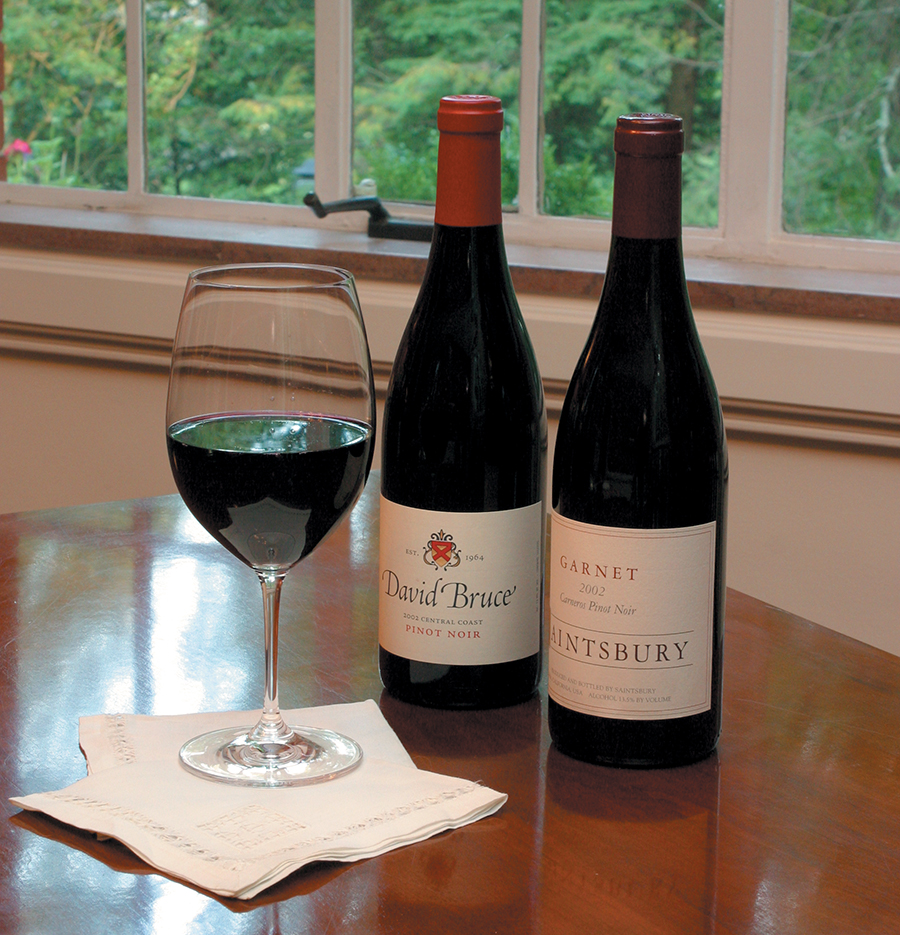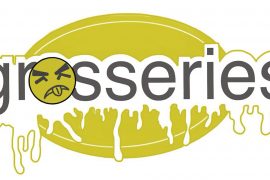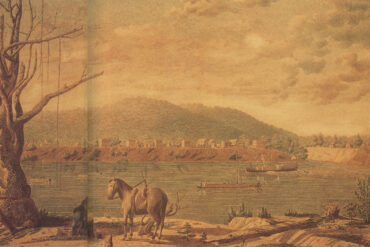New World Pinot Noir Changes the Rules
By Matthew DeBord
HQ 52 | SUMMER 2004
If you drink wine, there’s no way around it: eventually, you’re going to run into Pinot Noir.
It should be an exciting collision. Unfortunately, it often isn’t. Why? Because Pinot Noir is a challenge — for both wine drinkers and winemakers. It can be wonderful. But it can also be very, very disappointing.
But first a little background. Pinot Noir is the basic ingredient — the essential grape — in the world’s second most famous style of red wine. In Burgundy, a region in France, Pinot Noir is responsible for virtually 100 percent of the highest caliber reds. Here, in a landscape of patchwork vineyards, wines of rare delicacy and power are created. They offer a grand stylistic counterpoint to the wines of Bordeaux, which are based on the Cabernet Sauvignon and Merlot grapes.
Pinot Noir is a tricky customer. Frankly, it’s a pretty neurotic grape. In Bordeaux, winemakers have the luxury of blending their red wines, to achieve the best results. In Burgundy, they’re stuck with Pinot Noir. Not only that, they’re stuck with a very limited supply of Pinot Noir; the best grapes come from tiny vineyards that have been passed down from farmer to farmer for centuries.
As you might imagine, this has all created a certain mythology about Pinot Noir. I have never met a winemaker anywhere who wasn’t completely obsessed with the wine. It’s widely considered the Holy Grail: If you can make a great Pinot, you have achieved something special. I mean, anyone can crank out a decent Chardonnay. Pinot Noir is the real test.
Good Burgundy is generally pretty expensive; great Burgundy is out of reach. But over the past few decades, plenty of winemakers in the so-called New World — California, Australia, South America — have got it into their heads that they should give Pinot Noir a shot. In the process, something interesting has happened. Great red Burgundy remains unmatched for its astounding, mesmerizing quality — there’s still nothing like it — but New World vintners have proved that the wine has a future outside a tiny, esoteric place where the vines have been giving up great Pinot since the Middle Ages.
Stylistic differences are abundant: a French Pinot Noir is a light, fine-boned wine of deceptive complexity. The core flavors are red berries and vanilla (from oak barrels), but once you get past that, the sky’s the limit. Aromatically, Burgundy can hypnotize. The flavors can range from black pepper to exotic spices to really exotic stuff, such as smoke and truffles. There’s even a magical aspect that sometimes kicks in, something called “terroir,” or “earth,” which in France basically means that the wine tastes as if it’s expressing the place where it came from: the intangible values of its spiritual homeland.
New World Pinots aren’t that good, but they do have one big advantage over Burgundy: They have a chance to be halfway decent in just about every vintage. In France, they’re lucky to get a good Pinot Noir harvest three years out of every ten. In California, however, the longer, warmer growing season (even in the relatively cooler regions where Pinot thrives) leads to wines that are rich and robust, full of dark red fruit flavors. You can still read print through a glass of California Pinot Noir (try it), just as you can with a French version, but otherwise the wines are quite different.
This turns a lot of connoisseurs off of New World Pinot. For them, it just isn’t Burgundy. To me, that’s, um … sour grapes (sorry). In fact, a lot of winemakers I’ve met from Burgundy admire what’s been going on with Pinot Noir in America. They know that their version is untouchable, and so they can maintain a healthy, unsnobbish curiosity about the new juice.
This is particularly true of Pinot Noir from Oregon. Where California Pinots are exuberant and at times a tad jammy, Oregon Pinots are all about finesse and grace, qualities that Pinot-philes crave. Oregon is a funny place: it’s full of old hippies who have either been around for ages or who fled California back when they decided that everything had gone to hell in the Golden State. The winemakers have built a wine industry that has almost nothing to do with selling wine to the masses; with Pinot Noir in particular, they aim only for super-premium wines.
It’s worth seeking out Oregon Pinots, which are available online at Wine.com and other Internet retailers. Look for a producer called Adelsheim, which offers a range of bottlings, some expensive, some not (also keep an eye out for Argyle). You can’t go wrong with vintages, as Oregon hasn’t produced a lousy one since the mid-1990s.
But if you’re new to Pinot, there’s nothing wrong with seeking out California versions. A nice inexpensive bottling is put out by a winery called Pepperwood Grove. Pinot Noir is an excellent transitional red wine, to take you from summer to autumn foods, and if you enjoy an occasional plate of barbecued ribs, or shrimp and spicy gravy, Pepperwood Grove Pinot Noir makes a good basic companion. It’s an ideal picnic wine, too, and it’s under $8.
Moving up the quality register, Robert Mondavi’s Coastal line includes a good Pinot for under $20. You’ll discover some appealing “earthiness” in this wine, testament to the quality of the fruit that the Mondavis’ are able to obtain, produce and bottle for a terrific entry-level price.
Once you’ve gotten your feet wet, it’s time to begin tracking down California Pinots that express some of the virtues of their terroir. For this, look to Pinots from the Russian River Valley, in Northern California, and for examples from Santa Barbara County, just north of Los Angeles. (This is how you eventually go Pinot shopping, by the way — choosing your wines based on where they came from rather than because this or that well-known winemaker bottled them.) In the Russian River Valley, Clos du Bois, Rodney Strong and David Bruce are labels to look for. In Santa Barbara, the Hitching Post label is reliable. These wines range in price from around $20 to upwards of $50.
And of course, you can always give Burgundy a shot. But I’m warning you, that’s dangerous business. In fact, there’s a tradition with Burgundy, among enophiles: You save it until you’re older. That way, when your heart is inevitably broken, you can handle it.





